Welcome To Our Irrigation Library!
Water delivery
Finally we have arrived to the water delivery. Water pipes are one of the most important parts of an irrigation system which takes the vast majority of the installed parts. Even a relatively small system may demand laying of one or two hundred metres of pipe not mentioning drip irrigation where the pipes have to cover the surface of whole beds densely laid. But don’t run forward to fast.
Considering the water pressure, pipework of an irrigation system can be divided into two sections.
Primary pipes
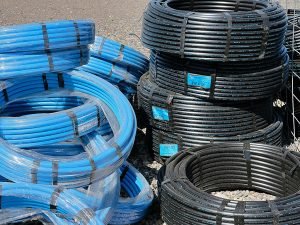
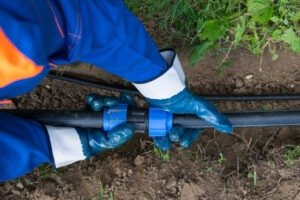
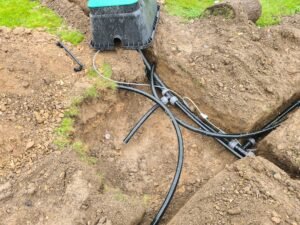
Primary pipes perform the water delivery under pressure always, connecting the water source to the zones. This pressure can be a tolerable level when the system operates on the mainswater supply. However it may be much higher when the system is boosted. Anyway, the primary network must hold the pressure for long hence these pipes and their connectors are made from HDPE, high density polyethylene plastic. As they are constantly under pressure we will make sure that they won’t be damaged accidentally.
Secondary pipes

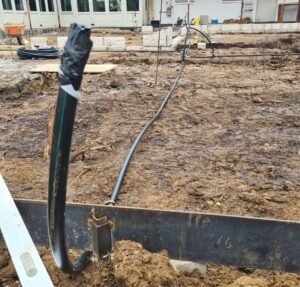
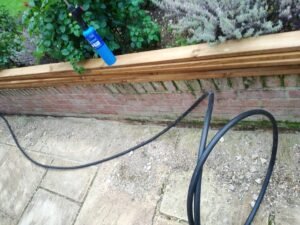
Lateral pipes (or secondary pipes)are part of the zones and installed for water delivery purpose directly to the emitters. They begin at the distribution unit, laid underground or on the surface and end at the emitters. On their way, they are possibly divided to branches depending on the design. Their offtakes are called feeds.
When a zone is not in operation these pipes are not under pressure but may contain some water. They can be made from HDPE (high density) or even LDPE (low density) plastic depending on their purpose. First ones are used in high pressure zones like popup sprinklers for example whilst the latter option is excellent where flexibility is more important than vulnerability, like micro sprinkler or planter zones.
Overground pipes
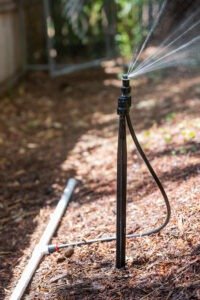
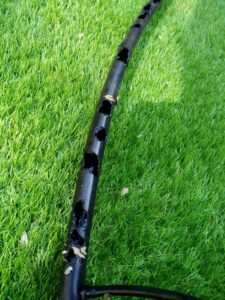
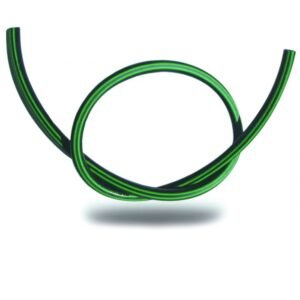
Plan the route of the zone feed pipes, considering factors such as the layout of the landscape, the location of plants or lawn areas, and any obstacles or structures that need to be navigated around.
Pipes laid overground is a common process for irrigation systems due to their cost effectiveness. Overground pipes are never laid visibly on a walking route or other disturbing way (unless otherwise agreed) but their accessibility might be important for service reason.
Sometimes feed pipes has to run in bottom of walls or fences along paved areas to deliver water for planters. As the pipes are mostly black and they are directed on the least disturbing route, then this installation is hardly visible and disturbant.
IBut still, overground pipe installation is more visible compared to underground installations. Therefore, suitable planning and attention to aesthetics may be necessary, such as concealing the pipes with shrubs, using decorative covers, or burying them slightly under the soil surface.
Sections laid down in suitable path/other gaps may be covered/hidden with existing stones/gap filler materials.
Pipe Connection and Fittings
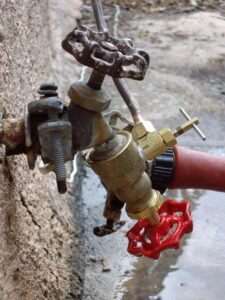

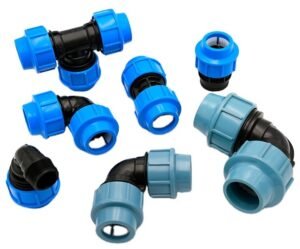
Use connectors, elbows, tees, and other fittings to join the zone feed pipes and create the desired configuration. It’s important to ensure watertight connections.
Throughout the installation process, ensure that all pipe connections are secure and watertight. Regularly inspect the system for leaks, adjust the pipe layout as needed, and perform maintenance to ensure optimal water distribution and efficiency.
Professional guidance or consulting local irrigation experts can provide valuable insights and recommendations specific to your landscape and irrigation system requirements.
